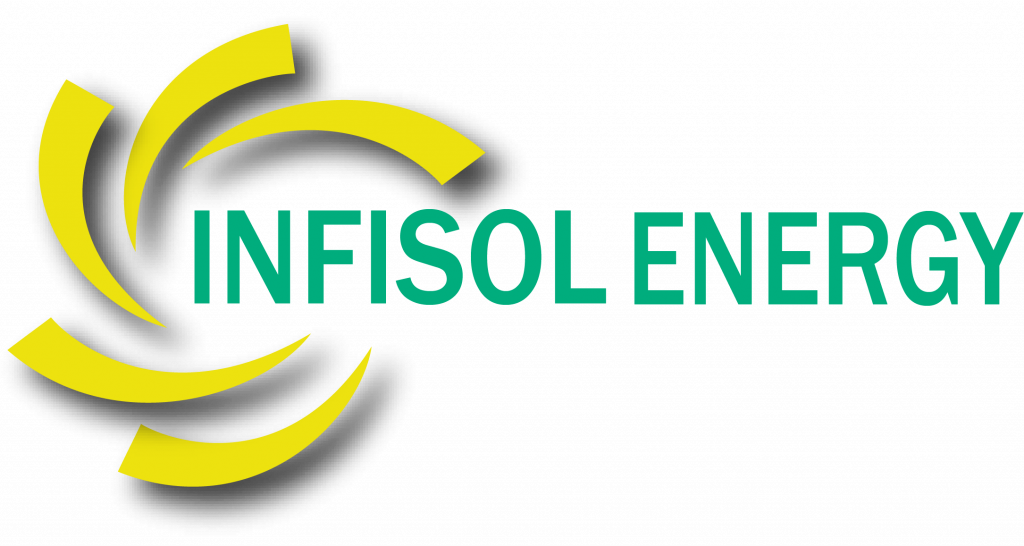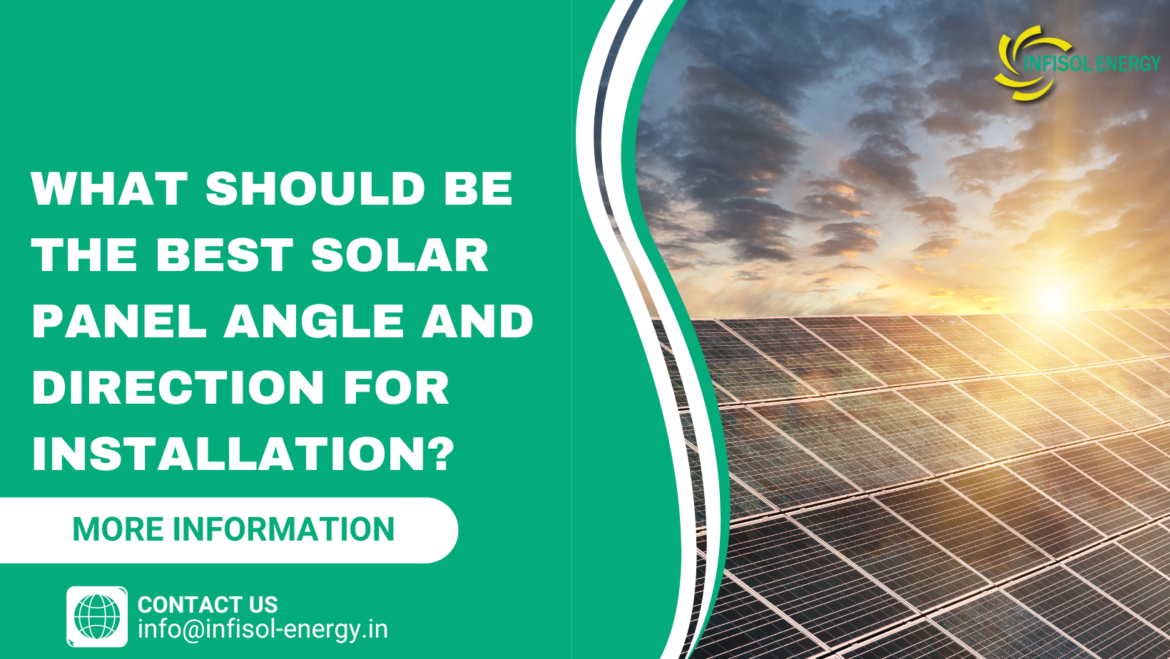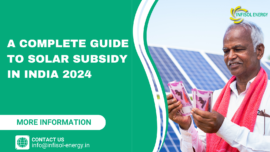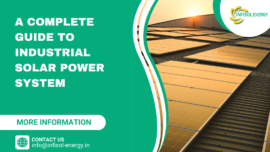Are you ready to experience the sun’s power and make your rooftop a powerhouse of green energy? Solar panels can save you money and reduce your carbon footprint, but there’s a catch: they need to be installed correctly to maximize efficiency.
The article aims to take you through the essential aspects of solar panel angle and direction, which will help them get the best out of their solar panel installation. Whether contemplating an on-grid solar system or working with the top solar company in Maharashtra, you need to know the ideal setup.
What is Meant by Solar panel Angle?
Solar panel angles are simply tilts at which they are mounted. The tilt level plays a major role in determining how much sunlight the panels receive each day or year.
The Optimal Angle for Solar Panels
The best angle for positioning solar panels depends on where you live. Generally, your latitude should determine this angle. For example, if you live in Mumbai at around 19 degrees North, your solar panels should be tilted at about 19 degrees.
What is Solar Panel Direction?
The solar panel’s direction refers to whether it faces north, south, or another cardinal point on the compass. This orientation affects how much sunlight falls on it over a day.
Ideal Solar Panel Direction in India
For India, the south is undoubtedly accepted as being optimum. On any day, south-facing panels receive more sunlight, maximizing electricity production. Residential and commercial installations must have this setup because it gives them a better solar payback period.
Why do the Angle and Direction of Solar Panels Matter?
You may wonder why there is so much noise concerning angles and directions when talking about solar panels. The main reason is to maximize electrical output from these installations. The best position for a panel during peak hours (11 AM-2 PM) would be perpendicular to sun rays, generating a lot of power.
In return, this position reduces energy costs and increases overall efficiency. Just use the sun’s power so that your electricity bills will decrease tremendously. This can only be achieved with the correct solar panel angle and direction. The right setup will significantly boost your system performance, maximizing return on investment.
Which Matters More: Solar Panel Direction or Solar Panel Angle?
Solar energy generation is best maximized by both direction and angle. Still, the former is slightly more important when we must choose between them because it determines how long sunlight hits the panel during the day. In other words, ensure your panels face true south.
General Guidelines by Region
- Southern India: The optimal tilt for those living in southern parts of India is about 10 degrees. Such an angle works well since it corresponds to the natural movement of the sun rays within these areas.
- Central India: For regions such as Maharashtra optimal tilt angle of around 15 degrees is recommended
- Northern India: Those in the northern parts need approximately 20 degrees of tilt. A higher angle compensates for the lower height of the sun above the horizon, especially during the winter season.
Still, raising inclination angle from ten degrees to twenty can lead to stronger winds pushing against panels thus causing damage. Thus, stronger mounting structures are needed to counteract this effect, though they may increase installation costs by a little bit.
Practical Tips for Optimal Solar Panel Installation
- Align with Latitude: For optimal year-round performance, align solar panel tilt angles with geographic latitude.
- Seasonal Changes: Seasonally alter the tilt of your solar panels. In winter, a higher tilt will capture more sunlight, while in summer, they should be positioned at a low angle.
- Obstructions to Avoid: Make sure no trees, structures, or buildings cast shadows on your solar panels, specifically during peak sunlight hours. This can cause drastic energy loss by the photovoltaic cell arrays.
- Pitch of the Roof and Orientation: Consider also the inclination and direction of your roof. For an angled or non-south-facing roof, adjustable mounts may be used to attain the proper orientation and incline.
Conclusion
Investing in solar panels significantly reduces your energy bills and contributes to a sustainable future. However, to get the most out of your solar panels, installing them at the right angle and direction is crucial. You can maximize their efficiency by facing them true south and adjusting the tilt according to your geographical location.
Even though the initial investment in solar panels can feel daunting, it’s a bright decision! Imagine cutting down your power bills by using free energy from the sun. At Infisol Energy LLP, we evaluate your power consumption patterns and design the best solar solution.
Sunlight can silently free you from dependence on the grid and save you money every month. Infisol Energy LLP, the best solar company in Aurangabad, helps you convert sunlight into savings. Call us today for a free consultation and step onto a brighter, greener path. Harness the sun’s power with Infisol Energy LLP, and watch your energy savings grow.
FAQs
Does the angle of solar panels really matter?
Yes, the angle of solar panels significantly impacts their efficiency. The angle should allow the panels to be as perpendicular to the sun as possible during peak sunlight hours.
What is the best direction for solar panels in India?
The best direction for solar panels in India is true south. This orientation ensures maximum sunlight exposure throughout the day.
Which is the best angle for solar panels in India?
The best angle for solar panels in India generally aligns with the latitude of the installation site. For example, around 10 degrees in South India and more than 20 degrees in North India.




